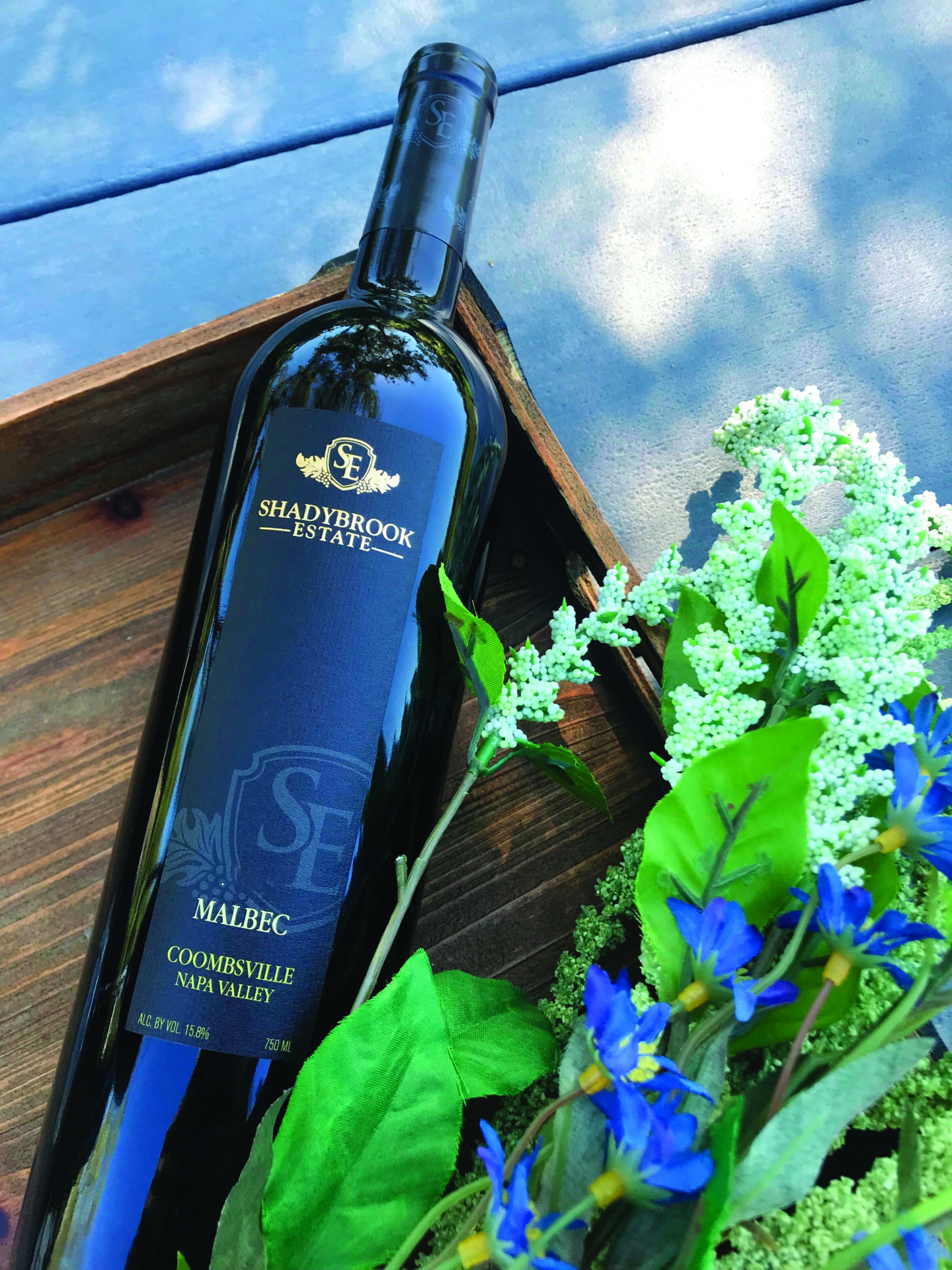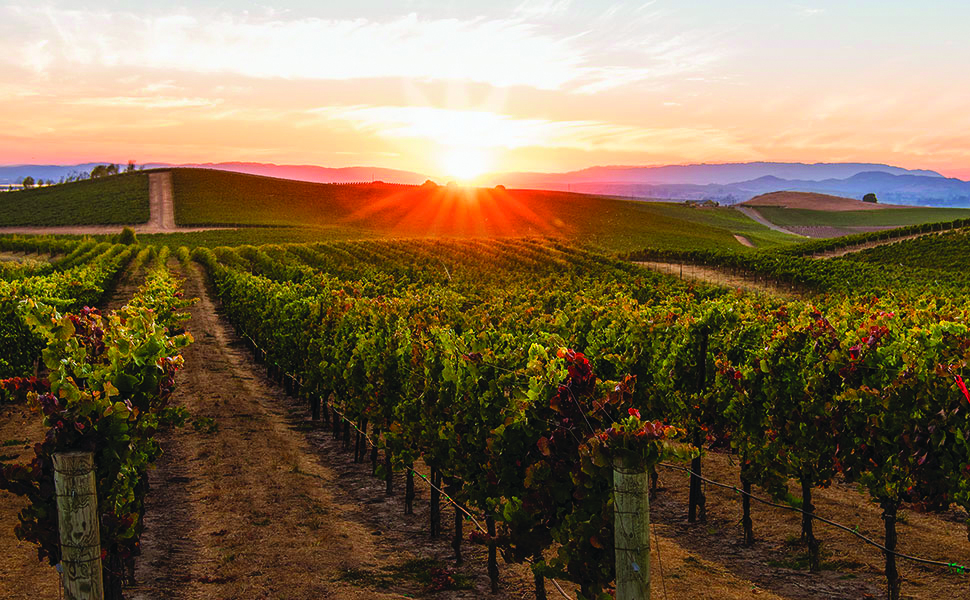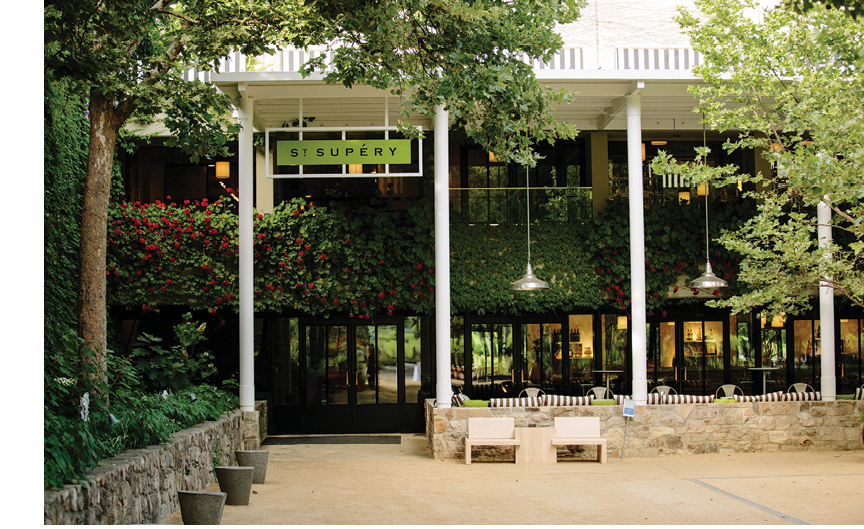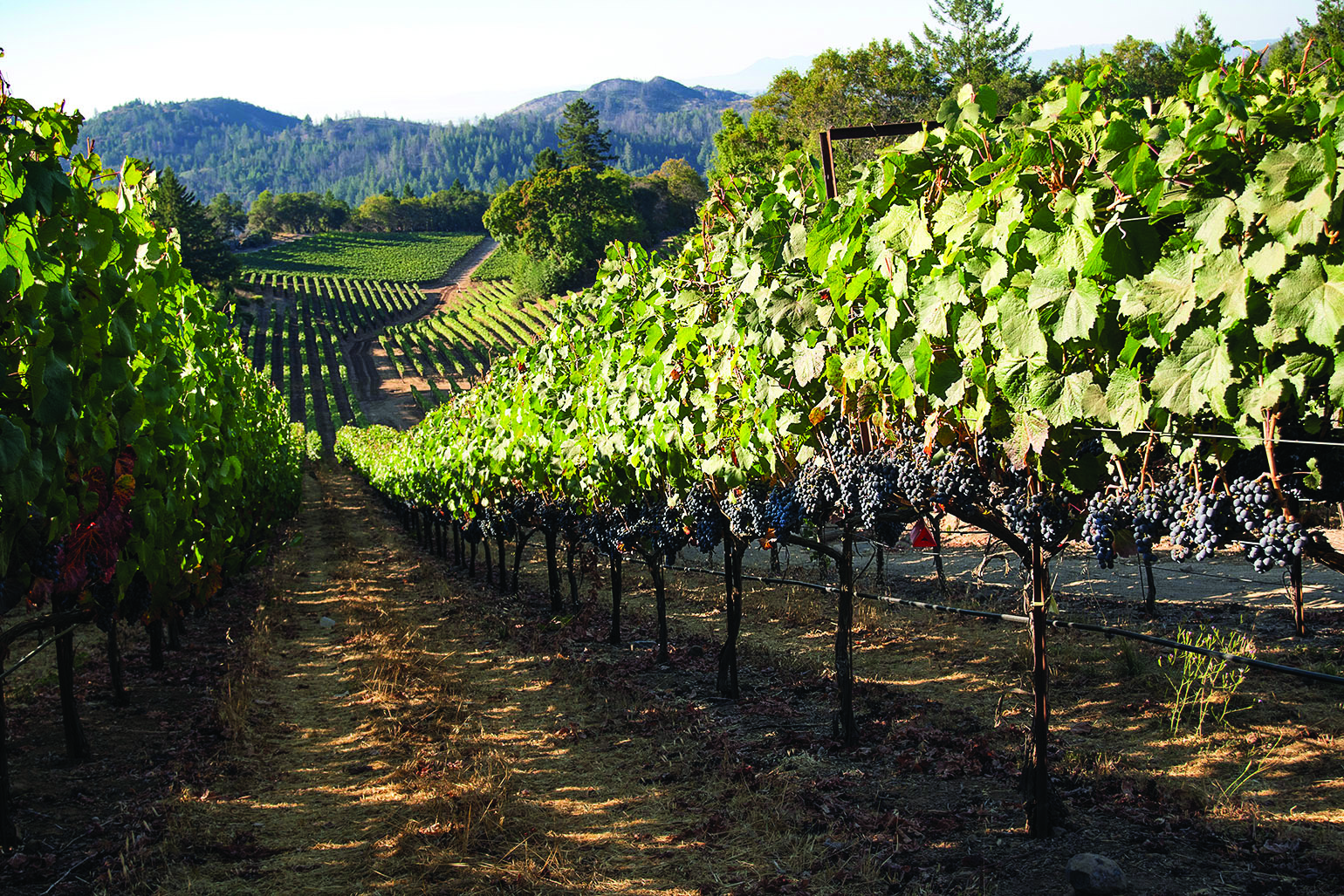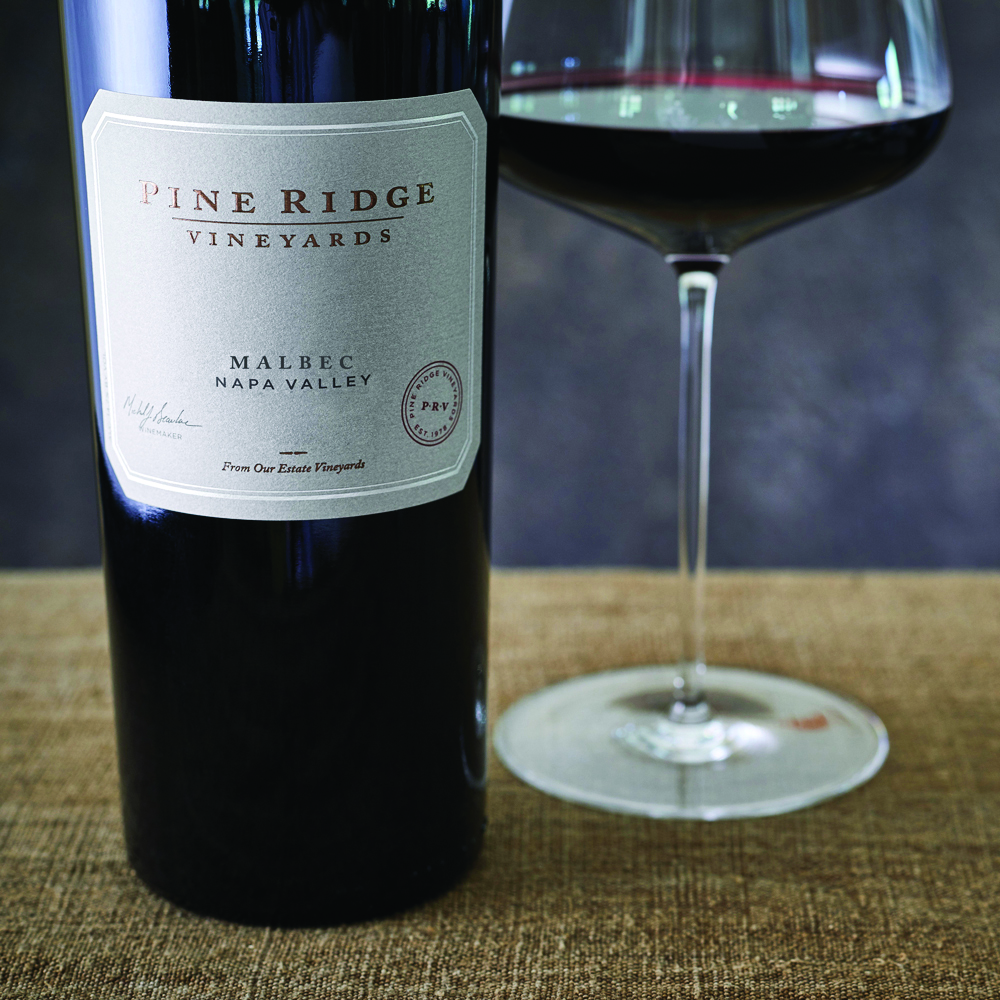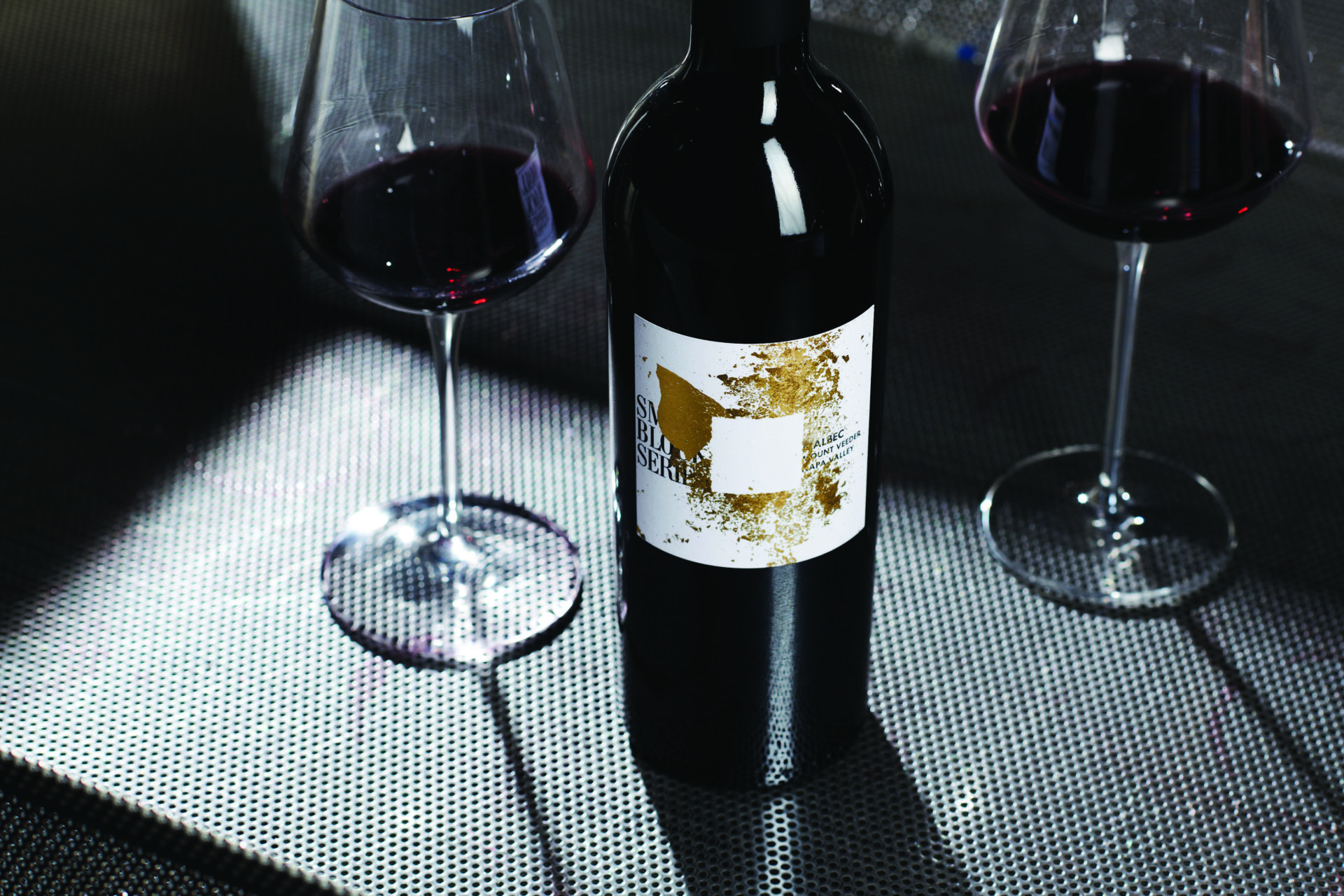WRITTEN BY MELISSA VOGT
Malbec is one of the five grape varieties allowed in French Bordeaux and typically represents tiny fractions of those sought-after wines. It has become Argentina’s most important varietal. But what about Napa Valley expressions?
Napa Valley is a region dominant to Bordeaux varieties, so it’s befitting that many of the local producers grow Malbec. Most of the local production of this grape variety is used as a blending grape in Cabernet Sauvignon and Merlot and other Bordeaux blends. But for some, Argentinian Malbecs—or even small-production offerings from Cahors, France—are an inspiration for single varietal expressions.
As a grape that is blended into the powerhouse style of Cabernet for which Napa is known, it adds color, softens the palate, and offers dark fruit and cocoa flavors. These characteristics bring balance and roundness to Cabernet Sauvignon, even when added in small percentages. Alternatively, many producers have chosen to highlight this varietal in limited-production bottlings around the 500-case range, some of which are exclusive to wine club members or released only in great vintages—many of which sell out quickly.
A Warm Weather Friend
Due to the weather in Bordeaux, France, Malbec was only ever able to succeed as a blending grape. Malbec is a grape that grows well in warmer temperatures, which is not the norm in Bordeaux—hence why the grape was planted in Argentina and, over the years, succeeded greatly. Today, it is Argentina’s most important grape variety.
In the States, Napa Valley has become a prime location for Malbec because of its climate, and while the grape hasn’t become the significant variety that it is in Argentina, many local vintners have tapped into its greatness in Napa soils. In the region’s appellations with a bit of elevation, Malbec shows off nice acidity, and some of the most expressive bottlings of this varietal hail from hillsides around the Valley.
“We grow Malbec where we have elevated conditions with more shallow soils and slightly more difficult growing conditions,” said Emma Swain, CEO of St. Supéry Estate Vineyards & Winery. The estate uses Malbec as both a blending grape and as a single varietal. St. Supéry’s Malbec fruit comes from their estate-grown, sustainably farmed Dollarhide Ranch Vineyard, and in 2018, they crafted a total of 550 cases of Malbec that show off the grape’s alluring characteristics. “We go through the vineyard several times during the growing season and drop a significant amount of fruit on the ground to ensure great concentration of flavors,” Swain emphasized, and it shows.
Another winery that is wisely producing elevation Malbec is Hess Persson Estates. “Our Malbec is grown predominately in our higher elevation vineyards, and this allows the grape to have very intense color and velvety concentration of tannins,” said Stephanie Pope, winemaker at Hess Persson Estates. Pope and her team utilize Malbec as a blending grape in their Cabernet Sauvignons and as a single varietal. As a blending grape with Cabernet, Malbec works to “balance the bold tannins of the mountain fruit creating an approachable wine earlier in its aging life,” Pope stated. It’s one of Napa’s tricks for making Cabernet enjoyable at a much younger age than is typical of the varietal.
At Pine Ridge Vineyards, their Malbec grapes are planted in two estate vineyards in the appellations of Los Carneros and Stags Leap District, both on the southern end of the Napa Valley. “Our estate vineyards in Carneros and the Stags Leap District allow this underappreciated Bordeaux variety to shine by providing it a cooler climate that it relishes, resulting in a juicy, floral rendition that best represents this inky colored variety,” said Joshua Mendoza Widaman, estate winemaker at Pine Ridge Vineyards. The grape is blended into their Cabernet Sauvignon and produced as a single varietal.
Joe Shirley, winemaker at Napa Cellars, has worked with Malbec vines in Atlas Peak and Coombsville. He admitted that “although the later season warms up significantly [in Coombsville], its proximity to the bay ensures cool nights and longer hang time, which helps develop the color and tannin to make a full-bodied, well-structured and age-worthy red wine.” At this estate, the Malbec grapes are used for their Winemaker Series as a single varietal and as a blending component. Their Meritage, a blend of the noble Bordeaux varieties, comprises four out of five Bordeaux grapes: Cabernet Sauvignon, Malbec, Merlot, and Petit Verdot. The Malbec composes a significant portion of the blend at 20%, and the production for this limited wine is only 240 cases. Their single varietal Malbec hovers around the same lot size at 291 cases and is blended with a small 10% of Cabernet Sauvignon.
Shadybrook Estate is another producer who champions the Coombsville terroir as an excellent fit for Malbec. “Our Shadybrook Estate Coombsville vineyard provides that rocky, nutrient-rich soil with cooler mornings that slow to rise to the hot summer temperatures in Napa Valley. This provides a longer, more balanced ripening in the Malbec fruit,” said Kimberly, vice president of sales and marketing at Shadybrook Estate. Winemaker Rudy Zuidema harnesses the power of their Malbec for a single varietal expression and a blending grape in their iconic Bordeaux blend Estate V. This wine incorporates Malbec in the style of true Bordeaux blends, utilizing all five of the French ordained varieties in its production. “Taking the time and energy to grow a fantastic Malbec adds dimension to your Bordeaux program,” Bothwell stated, and many other local winemakers agree. For Shadybrook’s single varietal 2018 Malbec, there were only 148 cases produced, and they are currently sold out. For those interested, the 2019 Malbec will be released this September.
More to Come
As global climate change forces winemakers across the globe to consider their vineyards and varietals, one must wonder, will Malbec ever take a stronger hold in Napa soils? Local expressions prove the variety has something to show here—and not simply as a blending grape. Single varietal Napa Valley Malbec is balanced, rich in varietal character, and impressively crafted by the talented winemakers who have put their faith in the grape. The varietal is one of Napa’s best kept secrets. Shirley of Napa Cellars said it perfectly: “I think that while there are several areas in the Napa Valley that have produced excellent quality Malbec, the full potential for Malbec in Napa Valley has yet to be realized.” Wine enthusiasts who favor this varietal should keep their eye on Napa Valley Malbec, as only time will tell if there is more to come.
Notable Malbec
Charles Krug Winery 2017 Malbec
The 2017 Malbec from Charles Krug Winery, their current vintage of this varietal, is a limited-release wine produced from estate vineyards in Yountville. Lovely aromas of blueberry and olive tapenade emanate from the bouquet, with flavors of black currant and blueberry on the palate. It’s a round and supple wine that drinks beautifully.
Hess Persson Estates 2019 Small Block Series Malbec
The 2019 Small Block Series Malbec from Hess shows off juiciness and plushness with smooth tannins and a supple profile balanced by fresh acidity. It boasts a lively palate with baking spice, blueberry, and a lengthy finish.
Napa Cellars 2018 Malbec
The 2018 Malbec from Napa Cellars shows red cherry, cured meats, and a bit of brine on the nose. On the palate, it’s velvety smooth and well balanced, with black cherry, blueberry, and dark chocolate.
Pine Ridge Vineyards 2019 Malbec
The Pine Ridge Vineyards 2019 Malbec exudes aromas of black cherry, eucalyptus, cured meats, purple flowers, and dark fruit. The wine is balanced and smooth with silky tannins, black cherry, blueberry, and subtle notes of black pepper.
Rutherford Hill 2018 Malbec
The Rutherford Hill 2018 Malbec is a concentrated expression of the varietal with rich notes of blackberry, blueberry, and ground coffee on the nose. It’s silky and structured on the palate, showing flavors of blackberry and a touch of caramel.
Shadybrook Estate 2018 Malbec
Shadybrook’s 2018 Malbec boasts floral aromas with huckleberry and savory herbs. On the palate, blueberry and caramelized brown sugar are balanced by mid-palate acidity and well-integrated tannins. The wine finishes long and beautifully.
St. Supéry Estate Vineyards & Winery 2018 Malbec
The St. Supéry 2018 Malbec has a highly aromatic bouquet with notes of blueberry, violet, rose petals, and eucalyptus. The palate shows off that elevated acidity with a round suppleness and flavors of blueberry, dark chocolate, and black cherry.
Trefethen Family Vineyards 2019 Malbec
The 2019 vintage from Trefethen is a beautiful expression of Malbec with dark fruit notes and hints of cured meat on the nose. The palate is balanced and expansive, with complex layers unfolding with notes of black cherry, blueberry, and wet earth. Silky tannins give way to a long finish.

